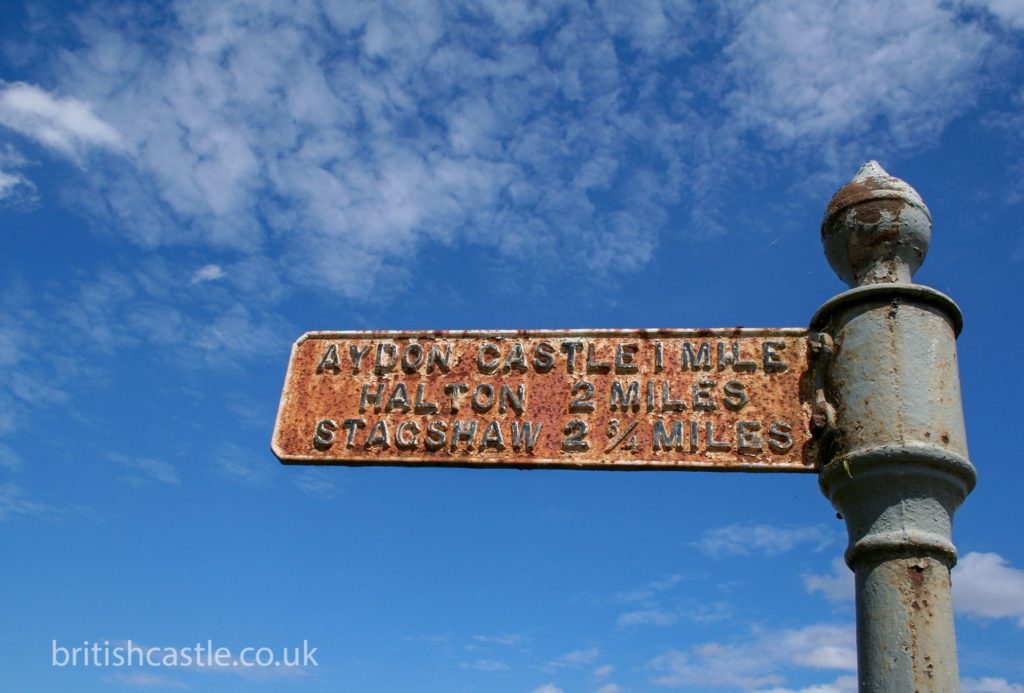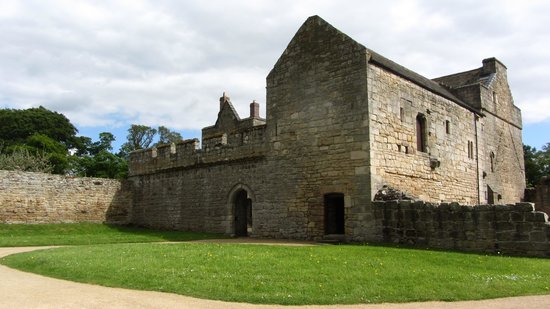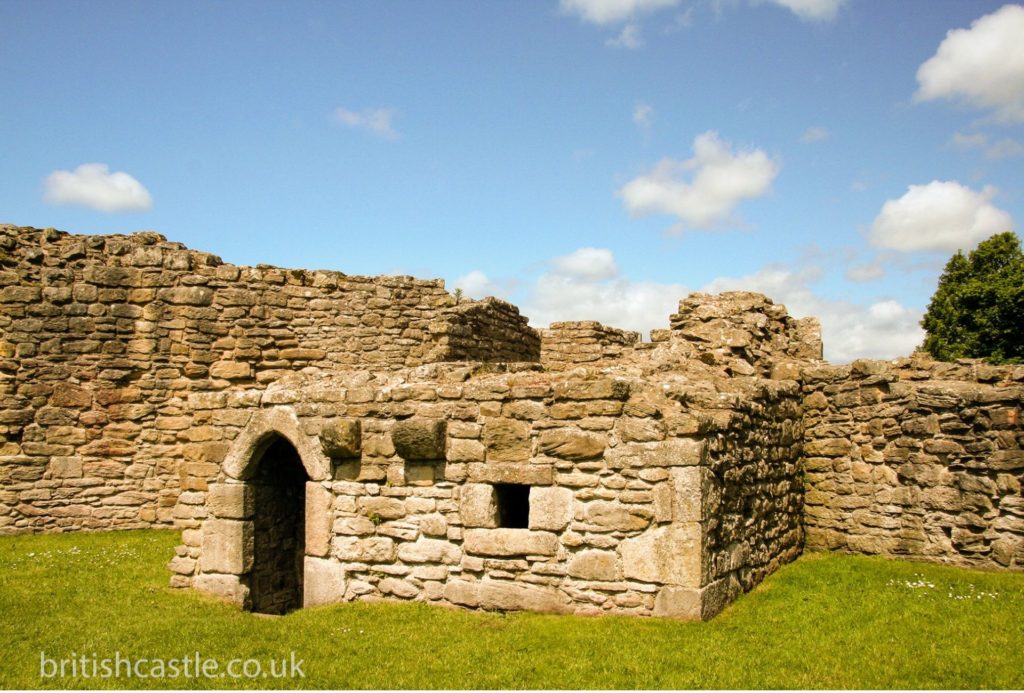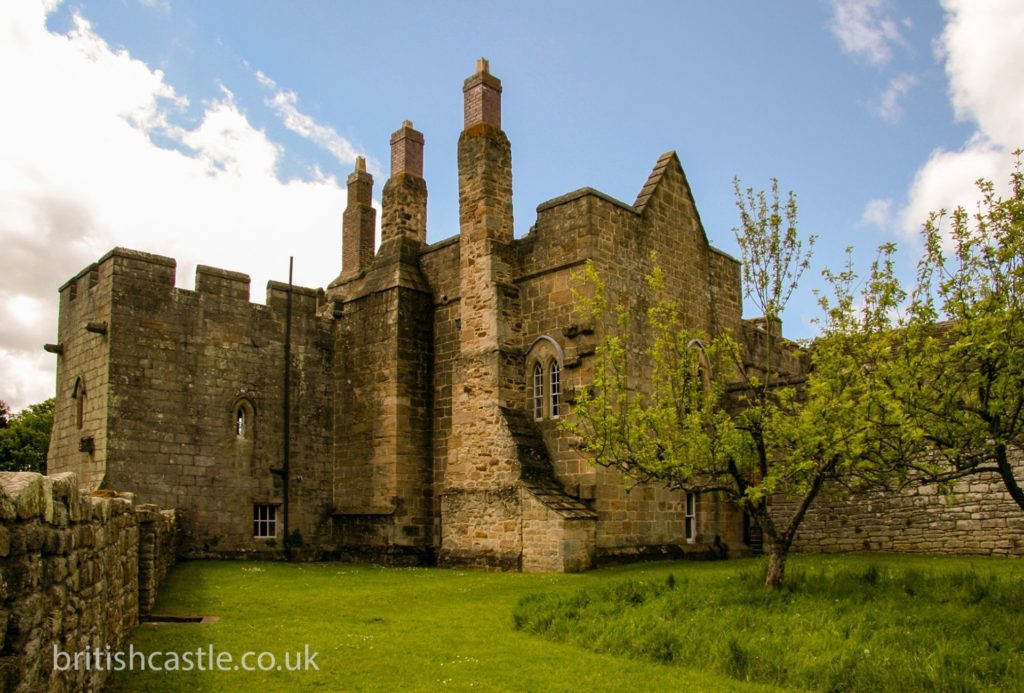Aydon Castle is built on a steep hill, overlooking the Cor Burn valley, to the north-west of Aydon Village in Northumberland. Although called a castle, Aydon is actually a medieval fortified manor house built in the late 13th and early 14th centuries.

Located in a naturally defensive and secluded woodland setting about two miles of the town of Corbridge in northern England, Aydon Castle, the storied structure turned manor house––and inevitably turned opulent fortress––dates back nearly one thousand years and has remained a consistent scenic point in England’s Northumberland region for centuries.
What began as a humble stead eventually became a dream renovation project for one wealthy landowner in the late 13th century. But this stately building, set against its serene backdrop, would prove no match for combative factions and a divided country constantly on the brink of war. Over time, Aydon Castle has become a pillar of northern England’s perseverance––one that remains standing to this day.
After undergoing extensive restoration works in the mid 1960’s it is now one of the finest and most complete 14th century manor houses in England.

History of Aydon Castle
Hugh de Raymes, the father
The result of what some historians consider to be a vanity project, Aydon Castle’s land was originally acquired by Hugh de Raymes––a wealthy merchant from Suffolk––in the early 1290s, who bought the parcel from a neighbouring estate in the hopes of carving out a much more prominent and influential image of himself. At the time, power meant everything, but the successful transaction of land and title occurred during the midst of a period of great British infighting between the English and the nearby Scots.

Hugh de Raymes did not include many defences in his original construction plan (there wasn’t much need for what was, at the time, a modest building), which would prove to be a major misstep. Instead, the property functioned as a manor house with a central hearth (no fireplace), as was popular at the time, with very few protective measures in place for potential attackers.
Robert de Raymes, the son
Unfortunately, Hugh’s full vision would not materialise in his lifetime––he died not long after purchasing the site, in 1295, whereupon his son, Robert, inherited the homestead, making it his permanent private residence while simultaneously fighting many of the great battles of the Scottish Wars of Independence.
Around the time of his participation in the 1298 Battle of Falkirk, where William Wallace famously fell to England’s King Edward I, Robert began construction on the first stone structure, which was incorporated into his father’s existing timber hall, two-story chamber block house. With new defensive measures on his mind, Robert added a hall range and, in 1305, received permission to add additional crenelations to further fortify the hall. An outer wall, turrets and arrow slits were also added in accordance with the new round of revisions––all of which would come in handy not long after.
The Anglo-Scottish Wars
The political mood around the whole of Britain in 1306 was tense: Scotland deposed their king and installed Robert the Bruce as the new leader of the land. He, along with freedom fighter William Wallace led the charge into England that same year, with a rush of frenzied servicemen bringing up the rear. Due to its proximity to the border, Aydon Castle was in the midst of a battle zone. And given its unfortunate placement at the base of a sloping hill, and not on a hilltop like most defensive fortresses (Aydon was originally conceived as a grand manor house––nothing more), it would quickly have to fend itself against marauders.
Construction of Castle Aydon, Manor House
Aydon Castle follows a standard rectangular layout; the upper stories of the main house were accessible via a staircase. Meanwhile, the central building features an undercroft (a church crypt) which was often incorporated into fortresses with defensive towers, also known as peel towers.

The castle is made up of four distinct parts; the outer, middle and inner courtyards and the orchard. To the north and west there is a curtain wall with a deep ditch in front.
By the time of the English defeat at the Battle of Bannockburn in 1314, the security of Aydon Castle faced particularly grim challenges. Following his capture by Scottish forces in 1315, and inevitable release following a ransom payment (apparently to the tune of 500 marks––an inconceivable sum for the time) two years later, Aydon Castle was recaptured from the Scots by England and de Raymes reinstalled as owner.
He then set to work further strengthening his fortress from opposing forces with fortifications. Over the next decade, Scottish armies would execute border raids into Northumberland multiple times, and, fortunately, the former manor house was able to withstand complete destruction thanks to many of Robert’s improvements.
One of the primary additions included a solid curtain wall, which secured the northern area of the property (Aydon’s existing walls were crenelated with battlements prior to his capture, but ultimately proved insufficient).
The main entrance to the outer courtyard is a simple archway and agricultural buildings stood to either side of it. The middle courtyard housed guests or soldiers in a lodging block that was demolished in the 1540’s.
The manor house stands within the inner courtyard. When it was first constructed access to the house was up a flight of stone steps but once the house became fortified additional doors were made on the ground floor. The hall was located on the first floor of the manor house and the kitchens were to the west of it.
Aydon Castle is unique in that there were very few renovations and modernisation updates performed throughout the years, so it stands as one of the more historically significant examples of 13th century architecture. The basic structure, layout and medieval features of the interior and exterior façade remain to this day. It is an exceptionally preserved example of a fortified manor house in the medieval tradition.
Aydon Castle throughout the years
During these centuries of fighting, Aydon Castle would be captured by opposing forces, and recaptured again by England, four more times before its uselessness as an imposing stronghold became fully realised by both sides. Not only that, in 1317, Aydon Castle was attacked by a band of English thieves looking to raid the building of its décor and finery. Robert de Raymes, in financial ruin, died in 1324 and Aydon was not only deemed a futile bastion, but a worthless private residence, too.
However, Robert’s son would inherit Aydon and restore much of the fortunes lost––and add further defensive measures to the exteriors. But at this time, much of the Anglo-Scottish tensions had died down. Following the death of Robert’s son in 1349, Nicholas de Raymes, would inherit the site. Nicholas, a storied and somewhat controversial character in his own right, would maintain a financially shaky and yet solid career. He would also festoon the halls and private floors of Aydon Castle with lush furnishings and treatments with the help of a notable patron: Henry Percy, the Earl of Northumberland.
Aydon Castle would remain in the de Raymes family well into the 15ht century, but hard times would fall on the last inheritors, who also had difficulty maintaining their status throughout northern England, and the castle would eventually be divided into apartments and leased to tenants. By the 17th century, Aydon Castle, having experienced multiple owners since the de Raymes, would function as a farmhouse, including various farm buildings. This is typically where historians lose track of the building’s status until well into the 1960s, when Aydon Castle, by this point alternatively referred to as Aydon Hall, was opened to the public as a popular visitor attraction.
For over 300 years Aydon Castle was used as a farmhouse until it was taken over by the Ministry of Works in 1966.
Visiting Aydon Castle
In recent years, Aydon Castle has been acquired by English Heritage charity, which is owns and operates the site as a visitor centre and attraction. The Grade I listed building––considered one of the great architectural examples of a fortified, medieval manor house in the world––is open to the public and also offers woodland walks in and around the natural bucolic surroundings, while the walled orchard and exterior attractions are ideal for picnics.
Located off Aydon Road between Aydon and the town of Halton in Northumberland, the castle has dedicated car parking and is easily accessible to everyone from multiple motorways. For more information about visits to Aydon Castle, visit the website.